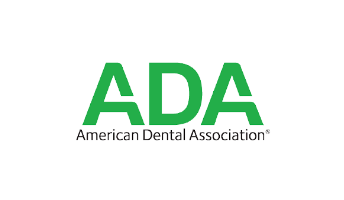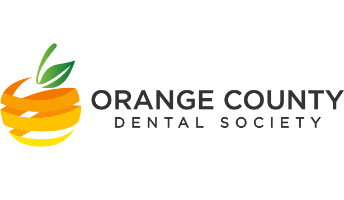Our Services
Dr. Watson and Dr. Niven provide comprehensive restorative and esthetic dental care. Our practice offers a full range of services.
01.Preventive
Children and adult dental cleanings, digital x-rays, in-office, and at-home fluoride treatments, personalized oral hygiene instructions, individualized treatments designed to achieve and maintain optimum periodontal health. Periodontal health assessment including intra and extra-oral cancer screening, periodontal probing, and soft tissue evaluation, local delivery of antibiotics for isolated gum infections, ultrasonic cleaning, and polishing. A dental endoscope helps treat isolated deep periodontal pockets.
02.Restorative
Bonding, veneers, crowns, implants, bridges, partial dentures, complete dentures, implant-supported fixed or removable dentures, root canals, inlay/Onlays, Invisalign (invisible braces)
03.Cosmetic Smile Design
Using digital intra and extra-oral photography we are able to analyze your current dental condition and recommend solutions to improve your smile. Some of the methods we use are gum re-contouring, bleaching, veneering, crowning, and bonding. We are able to analyze your situation and recommend individualized treatment options for you. Often treatment plans can be designed to be completed in stages to allow for financial limitations and/or time restraints while achieving optimal results. We use modern electric hand-pieces (drills) that are much quieter than traditional air-driven hand-pieces and have virtual reality headsets for viewing movies during treatment to make your visits more comfortable.
04.Dental Bonding
Dental bonding is an adhesive technique utilizing tooth-colored composite resin to repair and/or change a tooth. Dental bonding is used to correct chipped, discolored teeth or teeth with spaces between them. It is relatively inexpensive as well as conservative. Dental bonding can be used in some instances as a cosmetic alternative to amalgam fillings or to protect a portion of the tooth’s root that has been exposed when gums recede.
05.Dental crown
A dental crown is a laboratory fabricated restoration that covers most or all of the tooth structure above the gum line. The most common crown restorations placed today utilize a metal lining covered with tooth-covered porcelain or a ceramic non-metal crown. These ceramic crowns are tooth-colored metal-free crowns. While most people choose tooth-colored crowns, gold crowns are still used and are excellent, long-lasting restorations.
06.Dental Implant
A dental implant is a device replacing a tooth root and may anchor to a crown, bridge, or denture. Dental implants are designed to provide a foundation to replace missing teeth. A restored implant can look, feel, and function like a natural tooth. Implants consist of small titanium posts that are placed into the bone at the site where teeth are missing. The bone integrates with the titanium, forming a strong foundation. Implants not only restore a natural appearance in the mouth but can help preserve facial structure contours, preventing bone deterioration that typically occurs when teeth are missing.
07.Root Canals
Root canal therapy is a process of removing the diseased pulp of a tooth and filling the area with an inert material. The pulp is the area in teeth where nerve tissue and blood vessels are contained. Common symptoms of teeth possibly needing root canals are sensitivity to hot and/or cold that may or may not keep a person up at night.
08.Gum Contouring
Excessive display of gums when someone smiles can be an esthetic concern. This can be caused by an overgrowth of the gum tissue that covers the teeth or teeth not erupting fully. Some causes of this are genetic and others are related to certain medications.
09.The Wand
We understand that some patients get more nervous than others at the mere sight of a needle and syringe. That’s where the Wand can help. The Wand is a small lightweight handpiece that resembles a pen. The Wand operates by a computer-controlled system that allows for an even-flow delivery of anesthetic in a very comfortable, non-threatening manner. This allows the anesthetic to be delivered to a precise area without much of the traditional sting associated with getting numb.
10.Inlays and Onlays
These restorations are indirect, laboratory produced restorations that are bonded into place. They may be porcelain (tooth colored) or gold. Indications for these restorations are when too much tooth structure is missing or large amounts of decay are present and a direct composite resin filling would weaken the tooth. These restorations may sometimes be used as a conservative option to restoring teeth where a crown would have been otherwise indicated.
11.Porcelain Veneers
Porcelain veneers are conservative and esthetic dental restorations. Veneers are used to improve a tooth’s shape and color or to close spaces between teeth. In combination with home bleaching they can also cover up significant stains such as those caused by tetracycline. Porcelain veneers may be used to lengthen worn or short teeth and restore the smile of older patients. Veneers require only a small amount of enamel to be removed from the tooth’s surface. The porcelain is fabricated in the laboratory and bonded to the tooth.
12.Teeth Whitening
Yellow, dark teeth can detract from your appearance and can make you look older. Bleaching is a simple, conservative procedure that can lighten your teeth. We have had the best success with custom fabricated trays and bleaching gel that is used by our patients at home.
Please see our whitening protocol for guidelines.
13.Dentures
An artificial substitute for natural teeth and adjacent tissues. Dentures can now be implant-supported which provides a tremendous increase in comfort and stability.
14.Children's Dentistry
The dramatic decrease in cavities among children with regular dental care is due to visits to the dentist starting at an early age, professional teeth cleaning, proper tooth brushing instruction and habits, fluoride, and dental sealants. Drs Watson and Niven and their team are happy to provide all aspects of preventative dental care and restorative dentistry for your children.
We recommend that you begin bringing your children to the dentist for their first check-up at 3 years of age.
15.Digital Imaging (x-rays)
Digital x-rays eliminate 90% of the radiation required by traditional x-ray units. The technology is straightforward and easy to use.
16.Intra-Oral Camera
Intraoral cameras are tiny digital cameras that fit comfortably in your mouth and enable your dentist to show you an enlarged image of your smile on a computer screen. The camera is located in the tip of the Intraoral wand and transmits real-time video for you and your dentist to review. The wand is covered with a disposable plastic sheath, similar to an electronic thermometer, to keep the procedure sterile and comfortable.
Not only does this allow you to see what is really happening in your mouth, but it also documents what is seen, uploading it to a computer. Information can then be printed out to provide a hard copy picture for your records or for procedure verification by your insurance company.
17.Invisalign® Orthodontics
Imagine having straighter teeth without having metal in your mouth. Invisalign straightens your teeth without bands, brackets, or wires. The average treatment time is about 10-12 months.
Misaligned teeth can cause headaches and jaw pain and when teeth are crooked they can have increased plaque build-up. This build-up can lead to periodontal disease and gum disease. Improper bite also means you can’t chew food properly. Invisalign works through a series of comfortable aligners that no one will notice you’re wearing. Each aligner works for about 1-2 weeks. These clear, medical-grade plastic aligners function just like traditional braces in that they use controlled force to guide your teeth into proper alignment. As you replace each aligner with the next in the series, your teeth will move – little by little, week by week – until they have reached their ideal position.




